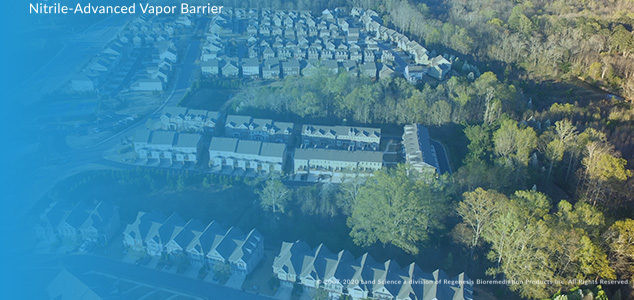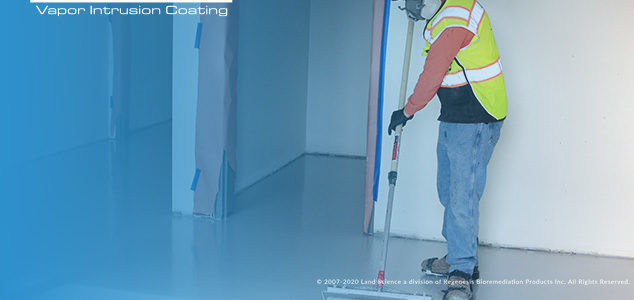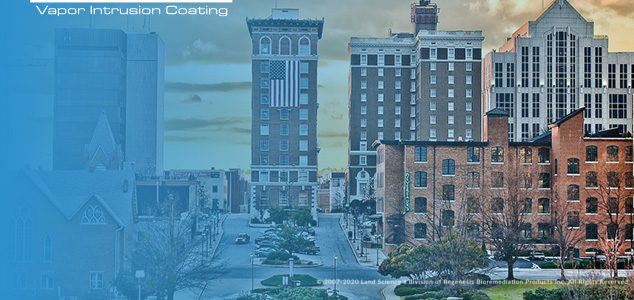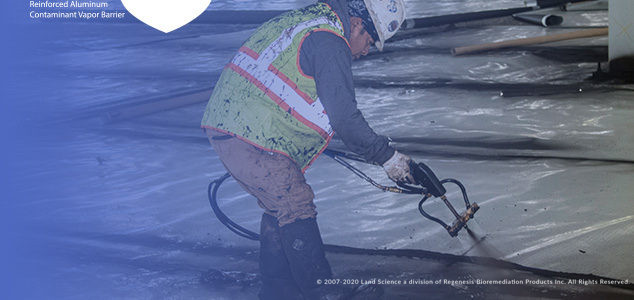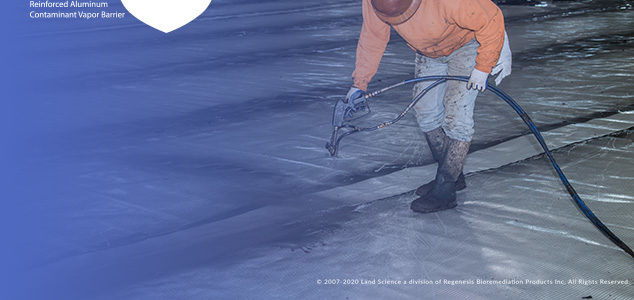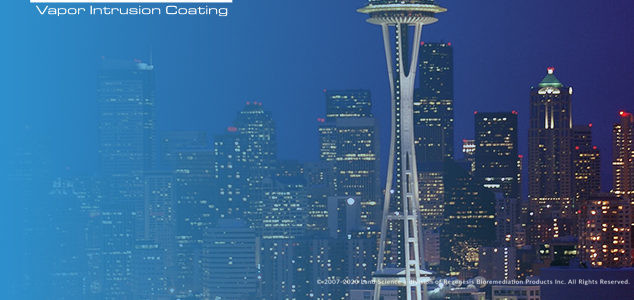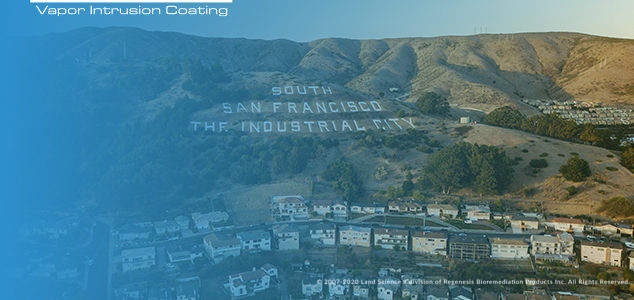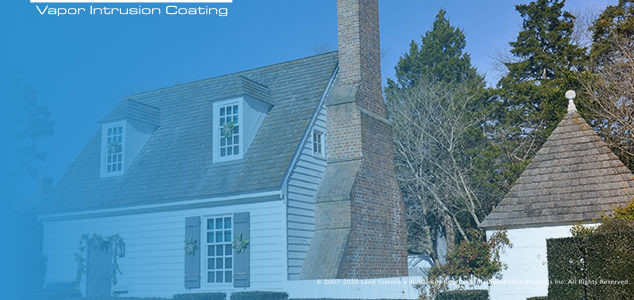Brownfield Redevelopment Makes Way for Mixed-Use Property in Nation’s Capital
Project snapshot highlights:
- Brownfield Redevelopment in Washington, DC
- Mixed-Use Development in Nation’s Capital
- 32,000 Square Feet Installed
The former brownfield site was targeted for redevelopment in the nation’s capital. The project is a 32,000 square feet mixed-use development in the heart of Washington, D.C. The environmental consultant specified the MonoShield® vapor barrier system with passive venting as a proactive step to prevent vapor intrusion of low-level petroleum hydrocarbon vapors. The MonoShield vapor barrier system was included in the site’s Corrective Action Plan and was approved by the Department of Energy and Environment prior to its installation.
Nitra-Seal Specified to Mitigate VOCs for Urban Atlanta Townhome Development
A leading national builder of luxury homes recently acquired a brownfield site in Midtown Atlanta with plans to develop a large-scale multi-phase townhome project. The developer planned to construct nine individual buildings on the site, each ranging from 4,000 to 6,000 square feet, with multiple townhouse units inside. Slab-on-grade foundations were set, but construction could not continue without understanding each building’s vapor intrusion risks and creating a plan to provide reliable protection for future residents.
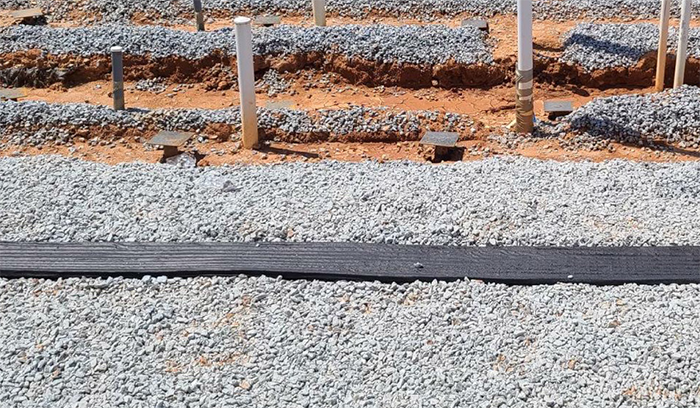
This case study features the following:
- Nitra-Seal protects future residents of new urban townhomes
- Total Vapor Solutions selected Nitra-Seal and TerraVent for this site after soil and gas samples revealed the need for a vapor intrusion mitigation system.
- It was determined that Nitra-Seal should be laid across every foundation, but ventilation needs were not uniform for all the buildings.
TerraShield Mitigates Vapor Intrusion on Former Industrial Site
Project snapshot highlights:
- The former industrial site required an effective vapor mitigation solution to move the federally funded project forward
- The consultant determined TerraShield was the safest and most cost-effective vapor barrier system to install at this site
- The installation of TerraShield was completed on schedule and the site is currently pending closure (NFA)
A former industrial site located in Southern California was targeted for redevelopment and chosen to be developed into a federally funded public site. Historical operations left the original property contaminated with petroleum hydrocarbons and volatile organic compounds (VOCs). In addition to the presence of these contaminants, new buildings constructed in the area are required to feature a vapor intrusion mitigation system due to the presence of methane gas in the soil, which may eventually enter unprotected buildings on the surface. Because of these factors and the completed site’s intended purpose for public use, an effective vapor mitigation system was necessary.
Preemptive Vapor Mitigation Protects Students from Potential Exposure
Preemptive Vapor Mitigation Protects Students from Potential Exposure
This case study reviews a high school that has been a fixture in its Southern California community since it was built in the 1930’s. Due to onsite pesticide use, a vapor intrusion mitigation system was necessary to protect students and staff. The environmental team responsible for treating the potential vapor intrusion identified the historical use of pesticides on site and voluntarily sought a remedial solution to protect the site’s future occupants. In efforts to protect students and staff against potentially harmful vapor intrusion as a result of historic releases, a vapor intrusion barrier system was proposed as the most appropriate remedial approach.
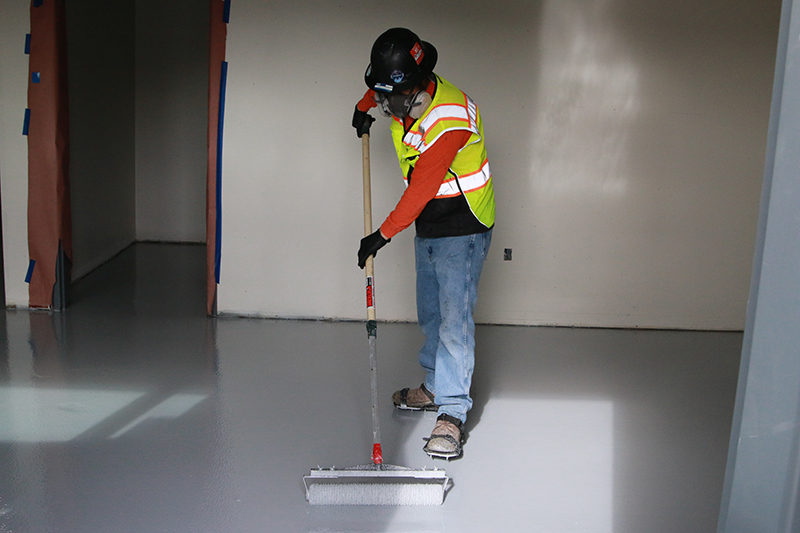
This case study features the following:
- High school is located in an urban Southern California area with more than 3,000 students.
- Due to onsite pesticide use, a vapor intrusion mitigation system was necessary to protect students and staff.
- The vapor barrier was applied throughout the 14,000 square foot library building located on-campus.
Retro-Coat Utilized to Prevent Harmful TCE and Chloroform Vapor Intrusion
A former industrial manufacturing facility in Greenville, SC was purchased for redevelopment in 2017. Building improvements were planned to include a warehouse, offices and self-storage units to serve a growing commercial area. Now located within an urban commercial land use area of Greenville, redevelopment plans included converting the industrial warehouse building into climate controlled self-storage units, and renovating the office into an apartment unit and office.
Prior to purchasing the site in 2017, the current site owners entered into a Voluntary Cleanup Contract and Brownfields agreement with the South Carolina Department of Health and Environmental Control (SCDHEC). The Brownfields agreement allowed the site owners to purchase the site while receiving SCDHEC liability protection for existing environmental contamination by agreeing to perform certain environmental assessment, mitigation, or remediation activities.
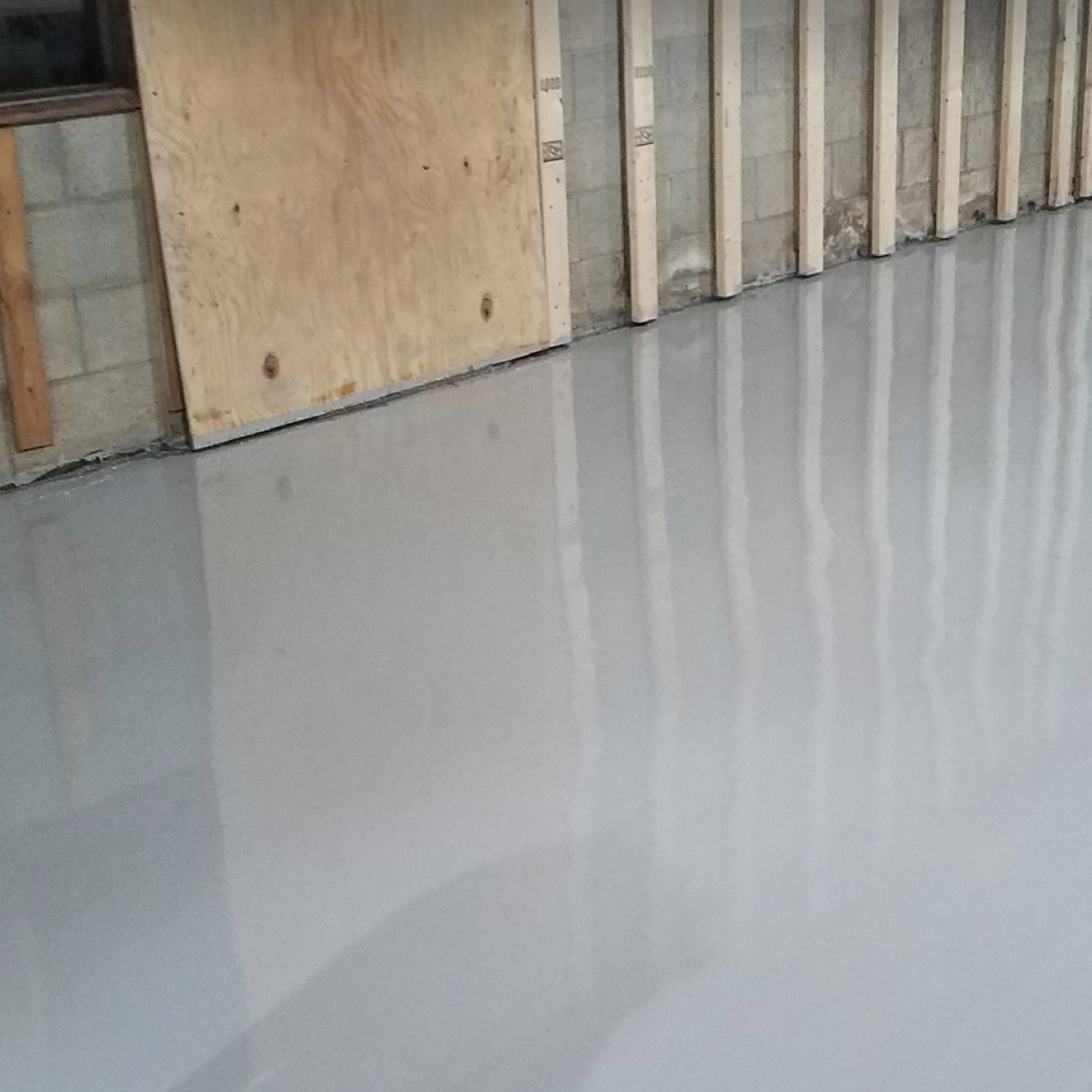
This case study features the following:
- The Retro-Coat barrier and Vapor-Vent system were incorporated into already planned renovations, saving the site owner time and money.
- Retro-Coat is resistant to both TCE and chloroform and is a wearing surface, rated for foot and forklift traffic.
- The Retro-Coat system layers cure quickly, reducing building downtime.
- The combination of Retro-Coat and Vapor-Vent was chosen as a remedial solution to mitigate the risk of harmful vapor intrusion.
MonoShield Installed At Site Of Former Hazel Park Raceway
This case study reviews a site at the former Hazel Park Raceway, located in a designated Opportunity Zone, which was established by the US Federal Treasury to encourage businesses to invest in blighted properties by providing tax incentives. These tax incentives made the redevelopment of the Hazel Park Raceway possible. In the course of evaluating potential remedial options for the 650,000 square foot warehouse facility (Tri -County Commerce Building #2), consulting firm SME approached Land Science, a division of REGENESIS, to incorporate a vapor barrier system to address the harmful vapor intrusion.
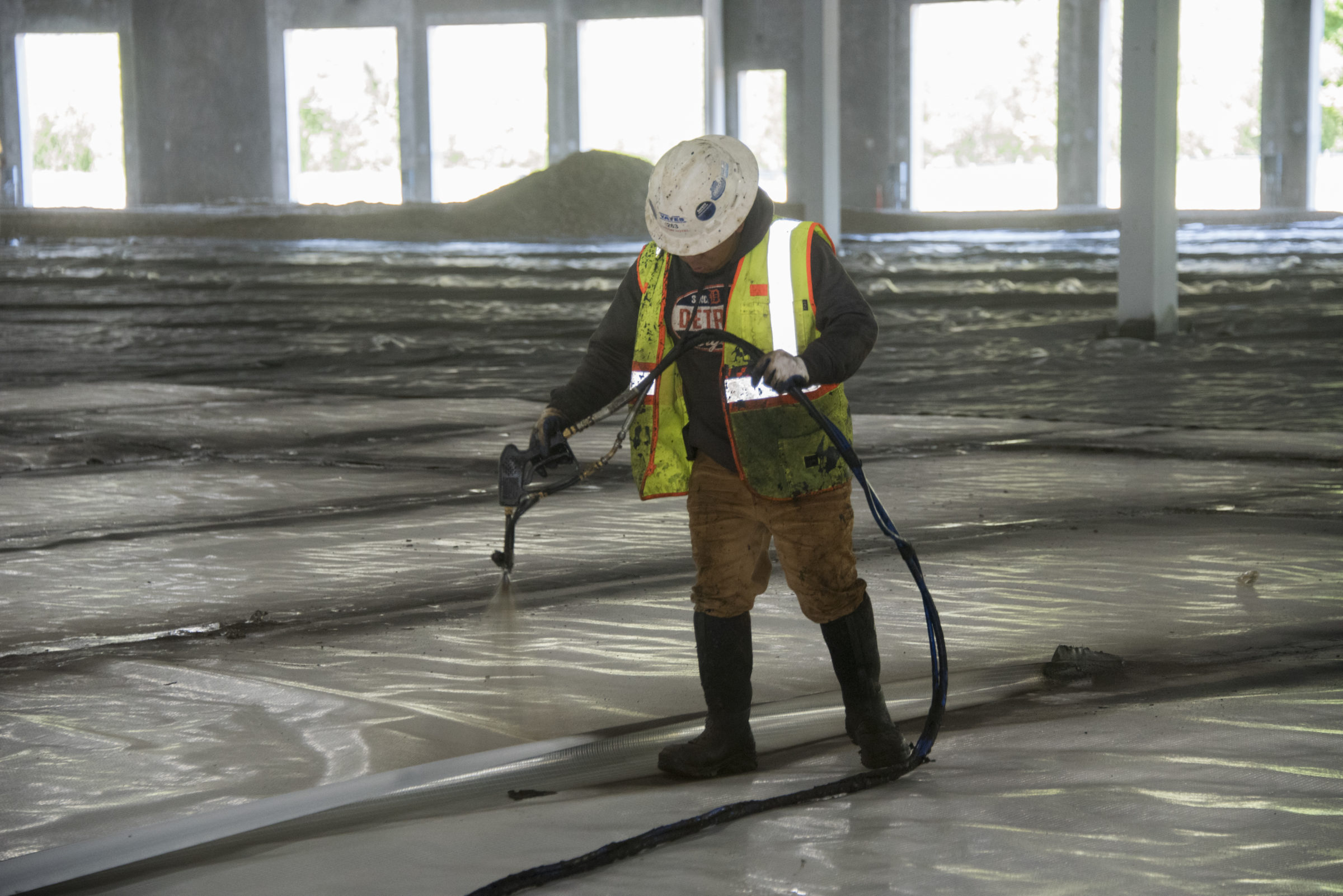
This case study features the following:
- With MonoShield offering a more reliable, cost-effective solution, the project was assured of meeting milestones and staying on time and on budget.
- Hazel Park welcomed the economic development and the promise of future jobs coming to the community through this key redevelopment project.
- The support of the city of Hazel Park, the state of Michigan, the Michigan Economic Development Corporation (MEDC), and the Michigan Department of Environment, Great Lakes, and Energy (EGLE) has made it possible to redevelop the Hazel Park Raceway.
- After a successful application at nearby Liberty Park, MonoShield was chosen as the best vapor intrusion mitigation solution for the Tri-County Commerce Building #2.
Construction Time Reduced with New Vapor Barrier System
This case study reviews a brownfield site that posed multiple remediation challenges with a variety of known contaminants including arsenic, lead, and methane. To build on the site would require a unique foundation along with a vapor intrusion mitigation solution. Working with the developer Ashley Capital’s environmental consulting firm SME, Land Science recommended MonoShield, a new and innovative vapor intrusion mitigation system. This modified asphalt-nitrile vapor barrier system is designed to withstand even the toughest vapor intrusion conditions, ensuring a safe environment for years to come. SME chose to be the first to install MonoShield because it provided the best chemical resistance for this brownfield site and would also save the client time and money.
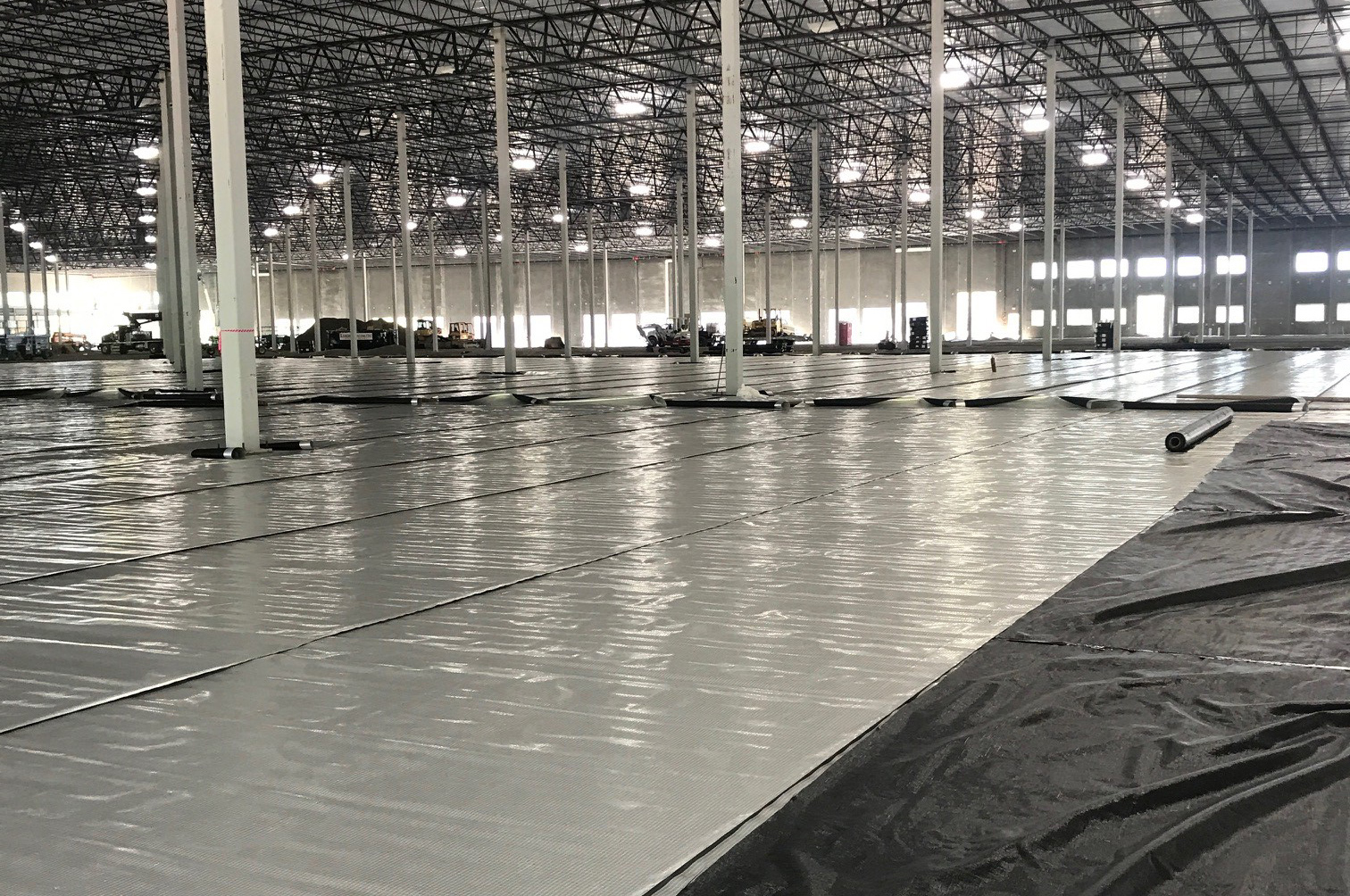
This case study features the following:
- Liberty Park is being transformed from underutilized into a property that will bring jobs and growth to the community.
- MonoShield has the efficiency of a prefabricated barrier system and the flexibility and responsiveness of a spray-applied component for sealing penetrations, wall terminations, and seams.
- MonoShield is both time — and cost-efficient; it can be installed 30-40% faster than alternate plastic sheeting or HDPE systems.
- Cooperation among numerous stakeholders: The Michigan Department of Environment, Great Lakes, and Energy (EGLE), Ashley Capital, SME, Oliver Construction, Land Science, and S&H Waterproofing.
Retro-Coat Applied to Former Jazz Club Ensures Protection from Vapor Intrusion
Subsurface contamination caused by chlorinated volatile organic compounds (CVOCs) beneath a former jazz club posed a direct risk to the indoor air quality for a Renton, Washington property. The CVOCs had migrated beneath the property from a neighboring dry cleaning operation resulting in a vapor intrusion (VI) issue. When environmental consultant Maul Foster Alongi performed a cost analysis of different vapor mitigation and remediation approaches, it was found that the Retro Coat™ Vapor Intrusion Coating System would provide an excellent solution at about a third of the cost less than other remedial approaches.

This case study features the following:
- How Maul Foster Alongi achieved 33% cost savings compared to alternative remedial approaches
- Indoor air quality evaluation of TCE and other VOCs
- Retro-Coat application details
- Vapor mitigation performance results and indoor air quality findings after the installation of Retro-Coat
Retro-Coat Helps Speed Real Estate Transaction
 Project Highlights
Project Highlights
- Retro-Coat functioned as a vapor intrusion mitigation membrane as well as a long-lasting coating for the basement level, accomplishing two of the owner’s goals with one product.
- Retro-Coat was chosen as the most feasible and effective treatment due to compatibility with pre-existing methane mitigation system components.
- Retro-Coat is resistant to harmful methane gas intrusion and is a wearing surface, meaning no additional concrete protection is necessary.
- The updated vapor intrusion mitigation system allowed for the new tenants to move in quickly.
- Retro-Coat is applied without any odor and cures quickly, reducing building downtime.
Project Summary
An office building located on the San Francisco Peninsula was left vacant for multiple years. The building is located on top of a capped landfill which is a known methane producer. After a recent change in ownership, it was important for the new owner to make the necessary improvements to the building so that new tenants could move in quickly. One of these improvements was to update the vapor mitigation system to ensure the tenant’s safety from any harmful vapor intrusion.
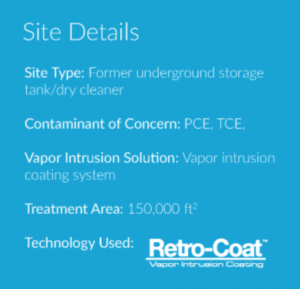 The owner enlisted the expertise of Langan to update the vapor mitigation system. Langan proposed using Retro-Coat Vapor Intrusion Coating System because of its proven resistance to harmful vapors and its durability. The owner was thoroughly pleased with this application because it accomplished two goals with a single product: it mitigated the harmful vapor intrusion and provided a durable coating for the floor of the basement level. Retro-Coat’s multi-functionality saved the site owner time and money.
The owner enlisted the expertise of Langan to update the vapor mitigation system. Langan proposed using Retro-Coat Vapor Intrusion Coating System because of its proven resistance to harmful vapors and its durability. The owner was thoroughly pleased with this application because it accomplished two goals with a single product: it mitigated the harmful vapor intrusion and provided a durable coating for the floor of the basement level. Retro-Coat’s multi-functionality saved the site owner time and money.
Technology Description
Retro-Coat Vapor Intrusion Coating consists of chemically resistant materials which protect existing structures from the threat of contaminant vapor intrusion. Retro-Coat was developed by experienced vapor intrusion specialists and is proven to resist the most aggressive chemical vapors. This technology acts as a protective barrier eliminating the need to remove the existing slab and when combined with in situ treatment, it can greatly lower remediation costs.
RESULTS
Retro-Coat consists of chemically resistant materials which will protect this structure from the threat of contaminant vapor intrusion, specifically methane gas. Retro-Coat finishes to a high gloss, easy-to-clean surface that is impervious to vapor and moisture transmission. Additionally, Retro-Coat withstands foot traffic and industrial settings. It was significant to have a highly durable coating system in place because the tenants plan to use the basement level to house large computers and heavy technological equipment.
The site owner has been very pleased with the outcomes from Retro-Coat. The building’s basement level has a highly durable coating and most importantly, the vapor intrusion mitigation system is now highly effective.
VOC Contaminants Reduced in one month for homeowners in Virginia Following Retro-Coat Installation
Project Highlights
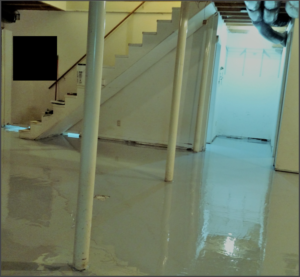
- VOCs reduced within one month of operation
- Achieved site goals of meeting VDEQ and DEH IAQ standards, rendering home safe for habitation
Project Summary
At a residential site in Virginia, vapor intrusion affected the interior living space of a private building due to release of heating oil from an Above Ground Storage Tank (AST) to the sub-slab environment beneath the structure. Indoor air quality sampling after the release revealed several petroleum compound contaminants at concentrations above EPA Residential Screening Levels. To minimize the displacement of the homeowners for an extended period of time, the vapor intrusion mitigation system had to produce good indoor air quality results as quickly as possible.
Leading environmental firm, Duncklee & Dunham, designed and installed an active, sub-slab vapor mitigation system and sealed the surface of the slab in the interior of the building with 1000 sq. ft. of Retro-Coat™ applied. The active system consisted of vertical vent wells installed in the building slab to a depth just below the bottom of the slab and connected to a manifold. Soil vapors were extracted from the sub-slab environment with an electric radon fan and exhausted to the exterior atmosphere. Retro-Coat primer and sealant were then applied to the entire surface area of the interior building slab to provide supplemental vapor intrusion prevention.
Technology
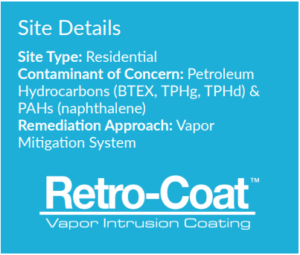
The Retro-Coat Vapor Intrusion Coating System is a complete product line that consists of chemically resistant materials to properly protect existing structures from the threat of contaminant vapor intrusion.
Results
The vapor mitigation system reduced VOCs in the exhaust gas within one month of operation, and reduced levels of petroleum compounds in indoor air to the extent that the building was suitable for occupancy six weeks after the system startup.
About the Consultant
Duncklee & Dunham is an environmental consulting firm based in North Carolina specializing in environmental geology, hydrogeology, site investigation and remediation, industrial hygiene, civil engineering and brownfields. For questions regarding this project, please contact Andrew Rodak, P.E. at (919) 858-9898.



